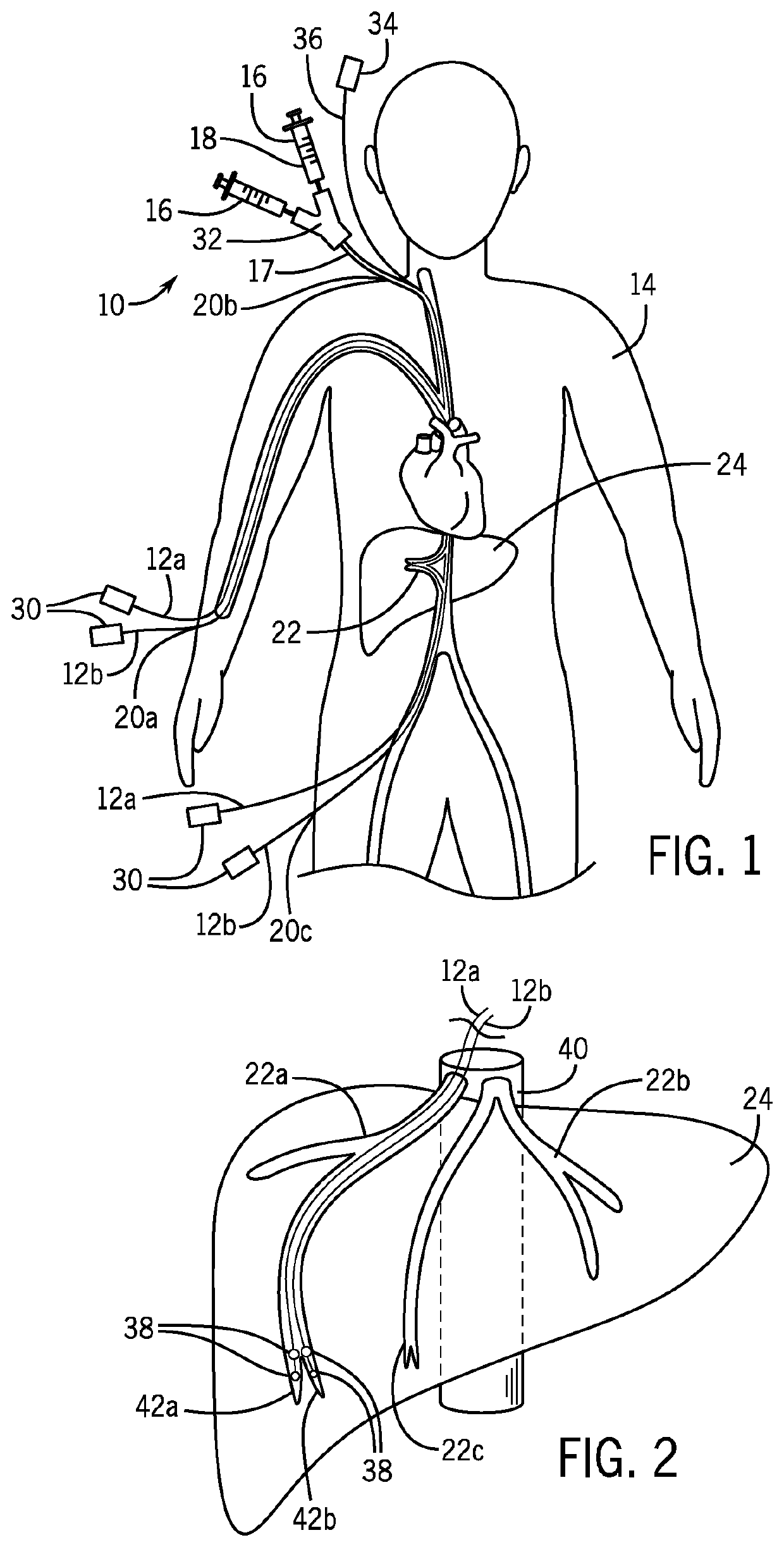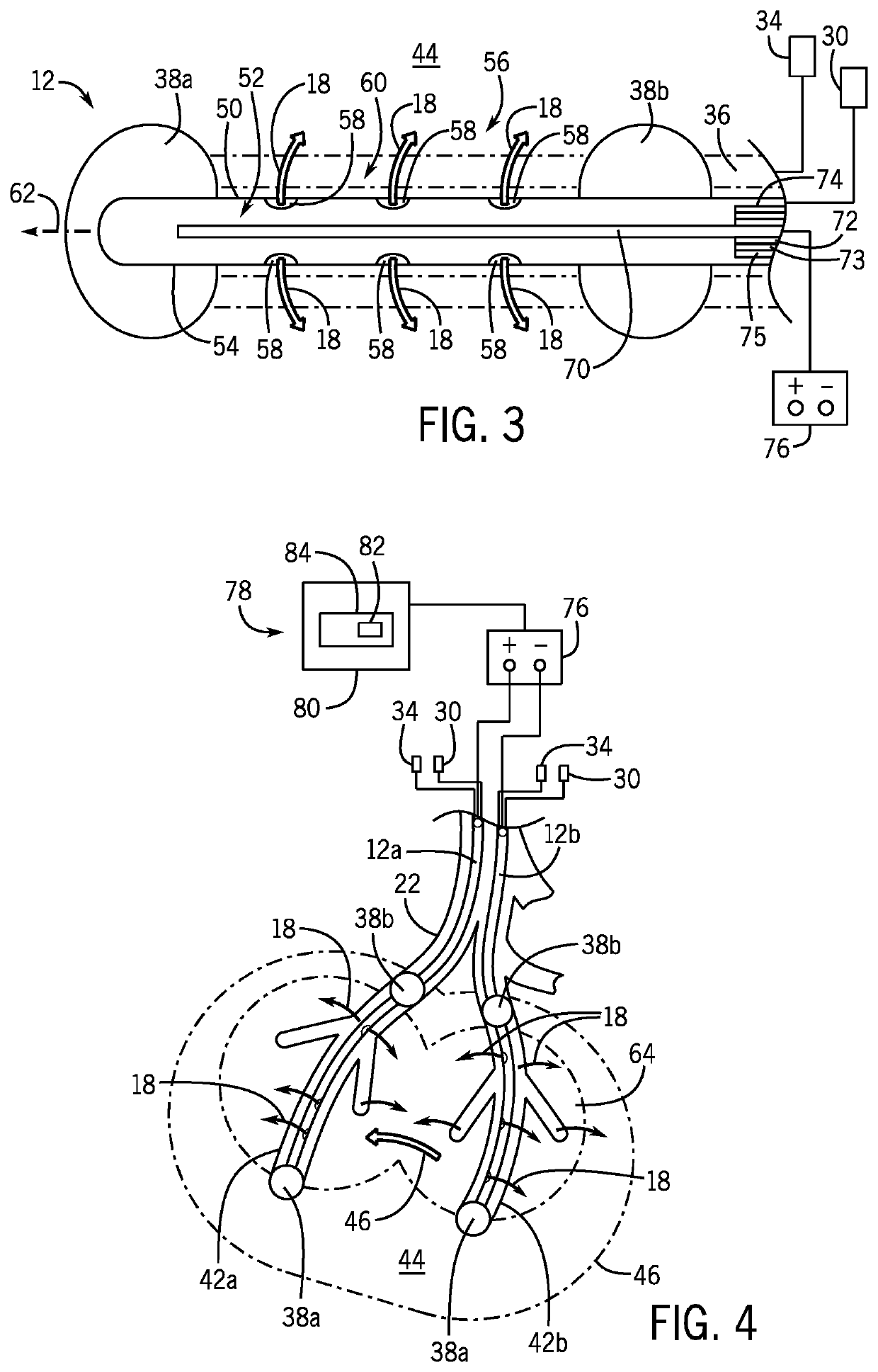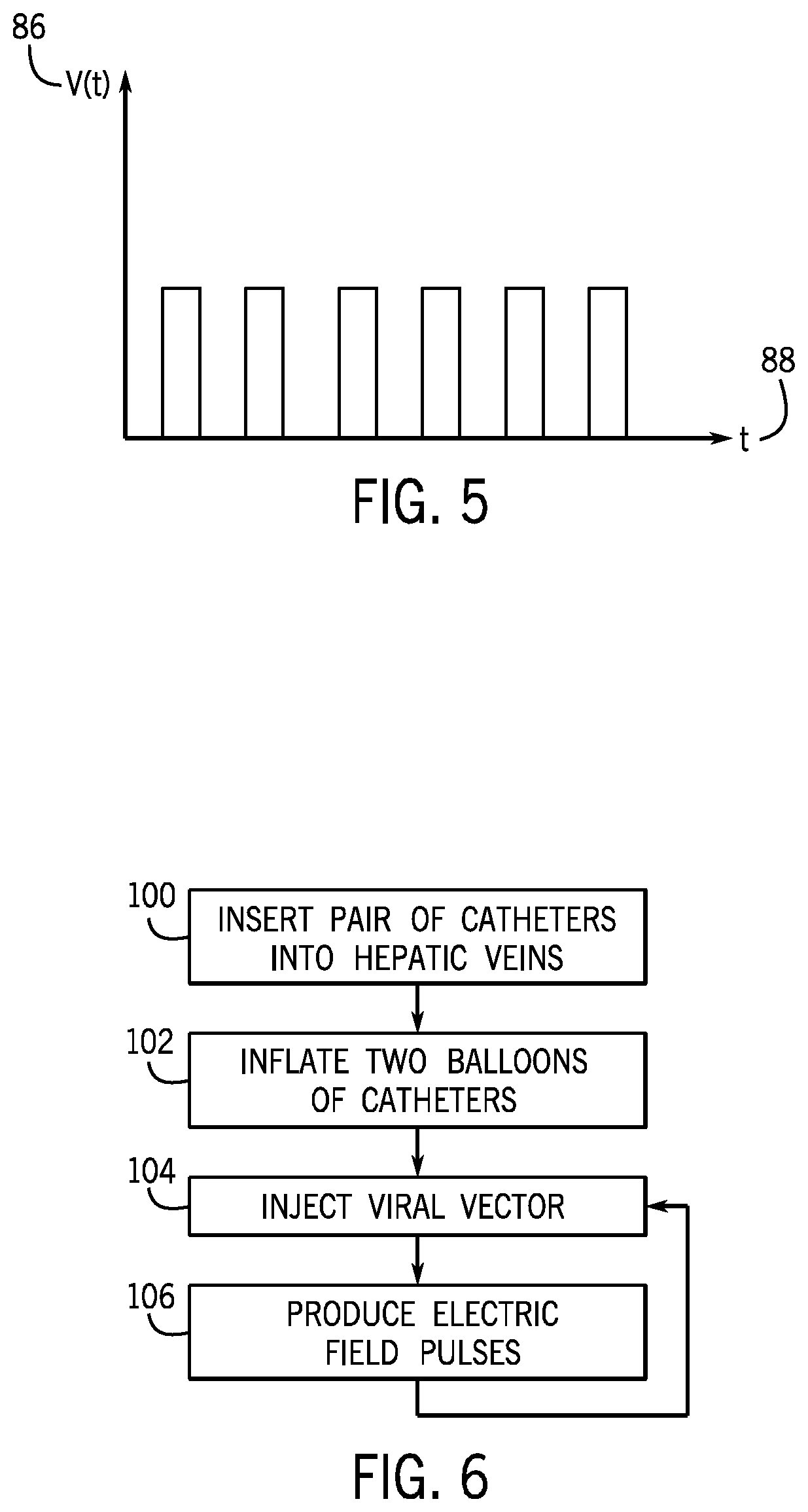In vivo gene therapy delivery procedure and device
a gene therapy and in vivo technology, applied in the field of gene therapy delivery methods and devices, can solve the problems of large doses of expensive, inefficient transduction of target cells, and large doses of gene vectors, so as to reduce the escape of gene vectors, reduce the risk of infection, and reduce the effect of vector waste through systemic dilution
- Summary
- Abstract
- Description
- Claims
- Application Information
AI Technical Summary
Benefits of technology
Problems solved by technology
Method used
Image
Examples
Embodiment Construction
[0040]Referring now to FIG. 1, a gene therapy delivery system 10 may include at least two catheters 12, and preferably a pair of catheters 12a, 12b, inserted within the body to deliver fluids containing genes to a target organ of a human patient 14 for transduction into cells. The fluids may be intravenously injected by a syringe 16 or a pump (not shown) into a proximal end 17 of the catheter 12 extending outside of the body and into a catheter insertion site. The fluids may include viral vectors 18, for example, retroviruses, lentiviruses, adenoviruses, adeno-associated viruses, and the like containing functional genes for gene therapy.
[0041]While the present invention is illustrated as a gene therapy delivery system 10, it is understood that the delivery system 10 may also be used to deliver drugs, for example, to a tissue or tumor site.
[0042]The catheter 12 may be inserted into a peripheral or central vein of the human patient 14 through a venous access site 20 allowing for cathe...
PUM
| Property | Measurement | Unit |
|---|---|---|
| distance | aaaaa | aaaaa |
| average distance | aaaaa | aaaaa |
| inner diameter | aaaaa | aaaaa |
Abstract
Description
Claims
Application Information
 Login to View More
Login to View More - R&D
- Intellectual Property
- Life Sciences
- Materials
- Tech Scout
- Unparalleled Data Quality
- Higher Quality Content
- 60% Fewer Hallucinations
Browse by: Latest US Patents, China's latest patents, Technical Efficacy Thesaurus, Application Domain, Technology Topic, Popular Technical Reports.
© 2025 PatSnap. All rights reserved.Legal|Privacy policy|Modern Slavery Act Transparency Statement|Sitemap|About US| Contact US: help@patsnap.com



